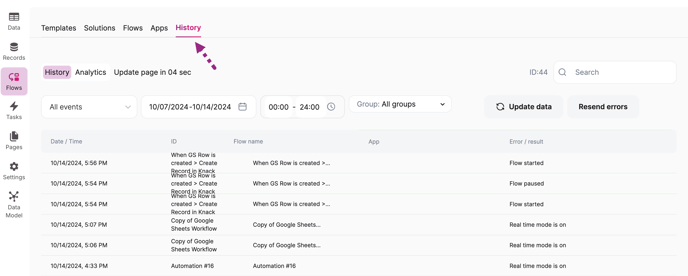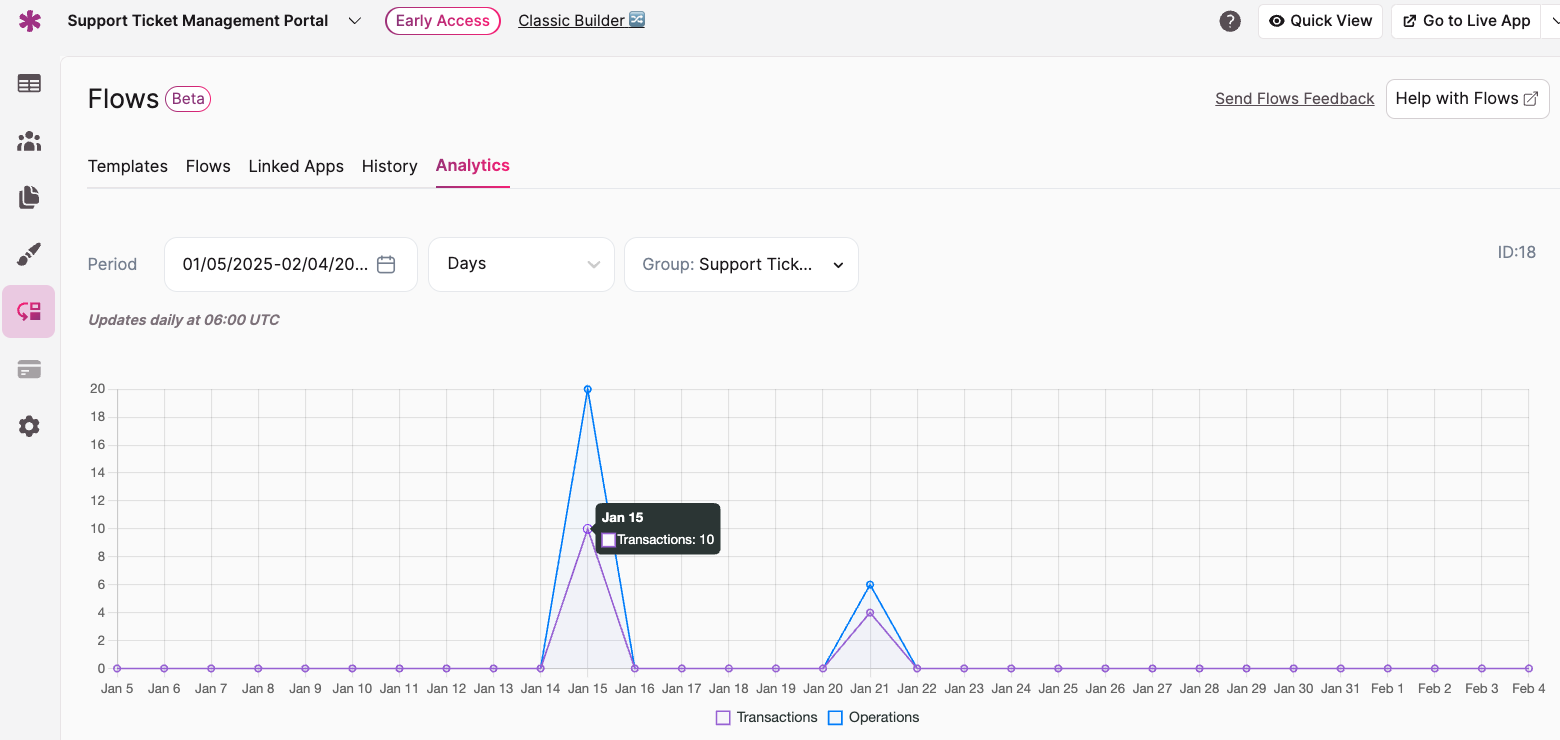Flows Terminology
This article provides a comprehensive overview of Flow's terms to help you gain a thorough understanding of each aspect of the feature.
What are Flows?
Flows enable you to streamline automation workflows by integrating your everyday apps with Knack apps. With Flows, you can effortlessly automate daily tasks, synchronize data, and simplify routine processes across different connector apps.
- Adding tasks from a project management app into a to-do list app
- Adding the email addresses of event attendees from a spreadsheet to an Event Calendar app
- Sending a weekly report to your team on advertising expenses
Flow
A flow contains multiple steps organized in a custom manner, to accomplish an automation or integration for you / your business. Each flow includes a trigger (an initial event) and one or more subsequent actions. Each flow can help you streamline a repetitive task, maintain data accuracy between your connected apps, and ensure consistency in your daily operations.
Linked Apps/Connectors
A linked app (sometimes called a connector app) serves as the vital link between your Knack app and an external application, facilitating smooth data transfers and action executions across various platforms, essential for any efficient automation workflow.
Note: Connector Apps also include other connected Knack apps from your account.
See a full list of available connection apps here: Flows Connector Apps
Triggers
A trigger is an event within a linked app that initiates the Flow. Triggers are the first step in any automation workflow. Triggers are linked to specific real-time events in a linked app and offer two data-transferring modes: API and Webhook. This provides flexibility in the timing and method of data transfer.
Learn more about triggers in our article here: Flows Trigger Steps
Actions
An action is an automated response that is executed when a trigger event occurs. Actions can vary from sending notifications to updating records, creating new records, updating spreadsheets, and more, depending on the specific user needs of the Flow scenario.
Status
The status of a Flow reflects its current state, which can be started, paused, blocked, or deleted. Monitoring the status of a Flow is crucial for efficient management, allowing builders to make necessary adjustments as their workflow progresses.
Steps
Steps serve as the building blocks of an automation scenario, encompassing triggers, actions, and any tools offered by Flows. They carefully outline the sequence of events in a Flow, guiding the workflow from beginning to end.
To learn more about Steps in Flows, see our article here: Flows Action Setup
Transactions
Whenever a Flow runs, only the Action steps count towards your Transactions. On the other hand, Trigger steps incur no cost! Each Knack plan includes a specific number of Transactions. Customers can also pruchase Add-On packs with volume-discounts for additional Transactions.
To learn more about Transactions included in plans, see our article here: Billing, Add-Ons, & Transactions Overview
Group
Users have the option to categorize each flow into a group, for better organization. Each Group corresponds to your specific Knack app. This enables you to organize your flows per knack app. You cannot create, edit, or delete the Group values (as they are tied to your Knack app name), but you can change with group each flow is bucketed towards.
To learn more about Groups, see our article here: Flows Grouping
Conditions
Filters enable users to define precise criteria at the beginning of a Flow scenario. By applying filters to data, users can guarantee that only pertinent information initiates the Flow, thereby optimizing the effectiveness and relevance of automated tasks.
To learn more about filters, see our article here: Flows Trigger Conditions
History
Users can utilize the History section of Flows to filter through triggered scenarios. This feature enables users to review automation history, troubleshoot any errors, view successful Flows, and identify when each Flow was triggered.

Analytics
The Analytics tab contains a chart to visualize the number of Transactions that have occurred (as well as the number of Operations, just for educational purposes). Builders can choose a specific timeframe to view their Transactions within.

Webhook
A Webhook is a key data transfer method utilized in Flow's automation processes. It enables instant data transfer in real time, ensuring that actions can be promptly triggered in response to events.
API Key





